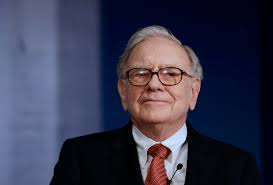In 1962, a successful young fund manager named Warren Buffett began buying a sleepy New England textile firm, Berkshire Hathaway.
He wasn’t interested in the textile business itself, just in the firm’s cash. While the business wasn’t growing, Berkshire generated copious free cash flow and had plants, equipment, and land that could be liquidated to provide even more cash.
With this in mind, Buffett dissolved his investment partnership and began instead to invest Berkshire’s excess cash flows, offering his investors a stake in Berkshire in lieu of their previous fund holdings.
And the rest is history… $10,000 invested in Berkshire in the 1960s would be worth more than $240 million near the end of 2017 against less than $1,560,800 for the same sum invested in the S&P 500. That’s a gain of 2,404,748% or an average return of 20.9% every year.
Berkshire’s performance is proof of the wisdom and value of Buffett’s approach
Although distilling all of his insights neatly into any single book or article is almost impossible, we can research some of the key concepts and basic requirements underpinning Buffett’s time-tested investment strategy. But today we’re going to explain the seven key features Buffett is looking for in an investment and show you how to bring that information into your own portfolio.

1.Easy-to-Understand Businesses
- If you’re a fan of Peter Lynch, former fund manager of Fidelity Magellan, then you may recall his idea of “buying what you know.” Buffett has been in a similar investment mantra for a long time. Buffett believes in limiting your investments to businesses that can be easily understood and analyzed. After all, if you don’t know how a company is doing.
Most specifically, for businesses with simple and uncomplicated business models, it is easier to predict future results. When he invests, Buffett always strives to look into the future, searching for companies he feels will still look solid on the road for at least 10 or 20 years.
In short, if you can’t explain a business completely and why you should own its shares in just a few clear sentences, then you should go home.
2. Low Debt Levels
Through going at his past success stories such as Coca-Cola (NYSE: KO), American Express (NYSE: AXP), and Wells Fargo (NYSE: WFC), Buffett explicitly studies the balance sheet of business carefully and tends to invest in those with relatively modest debt burdens.
Buffett favors businesses that can meet their needs by financing future growth.
Buffett prefers companies that can meet their requirements through internally generated cash when it comes to financing future growth, as opposed to raising capital by taking on debt or issuing more stock. Organizations that only use their current cash flows to expand are funded more or less internally. In other words, it is not up to these companies to secure loans to stay in business.
3. High Profitability and Return-on-Equity
If there is one piece of financial data that is correlated with Buffett more often than any other item, it is return-on-equity (ROE). ROE calculation is relatively simple, and you can find this metric on just about every financial website. Simply divide the net income of a corporation— described after interest, taxes, and depreciation as total profits— by its shareholder capital. This ratio calculates how much income a corporation earns in comparison to the contribution of the company’s shareholders.
Growth in earnings is good, but it always comes at a price. That’s where ROE is coming from. The highly informative figure shows how effectively a company uses.
4. Proven Managerial Expertise
Once Buffett makes a purchase, he claims he buys a management team as well as the company itself.
While the average investor is unlikely to be able to get to know the management team of a company personally, there are still plenty of important lessons to be learned here. Chief among them is the fact that Buffett likes businesses with competent, knowledgeable, and trustworthy management teams— particularly if they have an economic stake in the business.
Tell yourself before investing: do leaders confess errors? Were managers ‘ benefits matched with rank and file investors ‘ interests? Is the stock held by insiders relatively high? Have the firm’s retained earnings made rational decisions? Is management committed to providing long-term value to shareholders over short-term crowd pleasure?
Financial results can change overnight, so it’s also worth evaluating the leaders responsible for delivering those numbers
5. Attractive Valuation and Measurable Margin of Safety
The core value theory of Buffett is pretty simple: when you buy a business for less than it’s worth, you’re more likely to realize a profit. The source of Buffett’s ideas here is clear: his mentor Benjamin Graham’s teachings.
Graham focused primarily on the current assets and book value of a corporation— the actual numbers found on the balance sheet. Nevertheless, Buffett tends to give more credence to intangibles and potential business growth, and his intrinsic value analysis focuses on key metrics such as revenue, capital, cash flow, and projected growth.
No one can exactly project the future earnings of a company, however, so it is important to leave some room for error— o.
6. Sustainable Economic Moats
While no company is resistant to competition, some are less vulnerable to competition than others. Those with well-developed “financial moats” in place are far more likely to resist a competitor assault.
It’s easy to spot those economic moats. Strict SEC regulations and supervision, for example, have long hindered new businesses trying to enter the credit rating market, and that entry barrier has built a large economic moat for established players such as Moody’s (NYSE: MCO).
One example would be a popular brand name. Coca-Cola (NYSE: KO) is one of the most widely recognized names in the world, and this important product gives the company considerable pricing power, as millions of consumers are willing to pay premium prices for Coca-Cola drinks.
Not surprisingly, the long-standing investments of Berkshire are both Moody’s and Coca-Cola.
Other competitive advantages, such as the power of supplier negotiation and the network effect, may be more difficult to recognize, but they are no less efficient.
7. Consistent Free Cash Flow and Owner Earnings
Free cash flow (FCF) calculates the cash available to investors after all their expenses have been paid in full by a corporation. Buffett relies heavily on a similar metric that he dubs “holder earnings.” Examining the free cash flow yield is one way to gauge the cash flow output of a business. This is calculated by dividing free cash flow by market capitalization and reversing the price / FCF ratio. For example, a business with a 10% free cash flow yield produces 10% of its total cash market value each year. That cash, in turn, can be used to pay dividends or share buybacks from the fund — items that increase the returns of shareholders.
Buffett is always searching for companies with a demonstrated ability to generate wellbeing
Search for large, well-run businesses with good visibility of cash flow, high capital returns, and competitive advantages that are sustainable. And resist the urge to get caught up in daily fluctuations when you find them.
Warren Edward Buffett is an American business magnate, investor, and philanthropist who serves as the chairman and CEO of Berkshire Hathaway. He is considered one of the most successful investors in the world and has a net worth of US$82 billion as of July 18, 2019, making him the third-wealthiest person in the world

